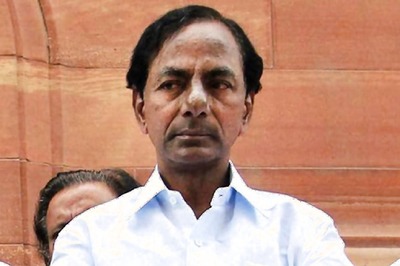
views
CHENNAI: The storyline of the controversial film Dam999 — the dam breaking as it was not constructed properly due to a corrupt Mayor — has no attribute to the Mullaperiyar dam, which is a monument built out of passion. The dam that has weathered 116 summers is an architectural and engineering marvel, says a retired PWD engineer, who had worked at the dam site. But what is amazing is the admiration the common people of Madurai and surrounding areas still have for the dam’s legendary builder, Major John Pennycuick, whose portrait can be spotted on the walls of homes and small shops amid pictures of gods. When his great grandson was in Madurai some years ago, thousands of people turned up for the felicitation organised by the state PWD, whose office in Madurai was named after Pennycuick in 2002, though his statue already stood tall inside the premises. The chief engineer who took the initiative for naming the office said: “This is our way of salute to the chief designer of Mullaperiyar dam, who brought smiles of relief to the farmers of Melur, Madurai, Sivaganga, Thirumangalam and Usilampatti and made their barren lands fertile once forever, thereby changing their life pattern.’’ However, the unique idea of harnessing the water flowing in the western side of the Western Ghats and bringing it to the eastern side was first explored in 1789 by Pradani Muthirulappa Pillai, a minister of the Ramnad king Muthuramalinga Sethupathy, who gave it up as he found it to be expensive.Later, the British were struck by the same idea and in 1888, the responsibility of preparing a plan was entrusted with Pennycuick, who chose a valley between two hills in the thick forest to build a 155-feet-high concrete dam. The plan was to capture the Periyar river water, gushing wastefully towards the sea, in a reservoir, diverting it in the opposite direction through a tunnel drilled across the mountain and channelling it to the Vaigai. The dam was christened Mullaperiyar as it is located at the headwater of the Periyar river after its confluence with the Mullai river. So, the British government in India signed a deed with the Maharaja of Travancore, in whose kingdom the area fell, on October 29, 1886, to lease out 8,000 acres of land in the forest for a period of 999 years. But, after embarking on the project in 1887, finding labour locally became a problem. So, the British army was engaged in building the dam between 1889-90 and Portuguese men were also brought in. Besides that, transporting construction material turned out to be major task. To ferry limestone — an estimated 80,000 tonnes of it went into the construction — several innovative methods were adopted. One, through a wire ropeway from Gudalur hills to Thekady and then by bullock carts into forest and another was through a ropeway linking the dam site itself. Apart from that, bunds were raised across another river called Mulliya Panjan that flows into Periyar and on the stagnant water stretch boats were plied.More than such difficulties, it was the death of several officers and workers that makes the saga of the dam construction more heart-rending. Between 1892 and 1895 alone, 483 people died of diseases. A cemetery of the British people still stands testimony within the leased land.Work itself was not easy. There had been days and nights when workers stood as human walls inside the gushing water, preventing the structures from being washed away. The plan would have been abandoned, particularly after a near built dam was washed away. Though the British wanted to wash their hands of the project, Pennycuick sold his wife’s jewellery to mobilise funds and continued the work. And the dam became operational in 1895.


















Comments
0 comment